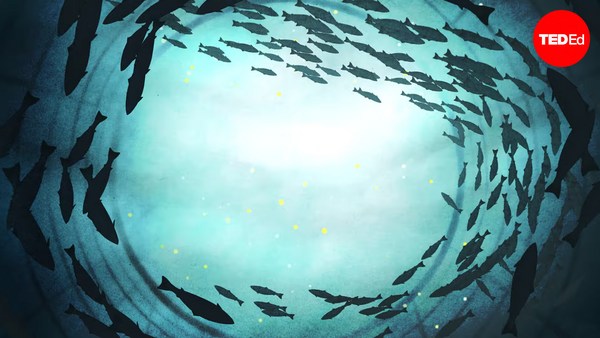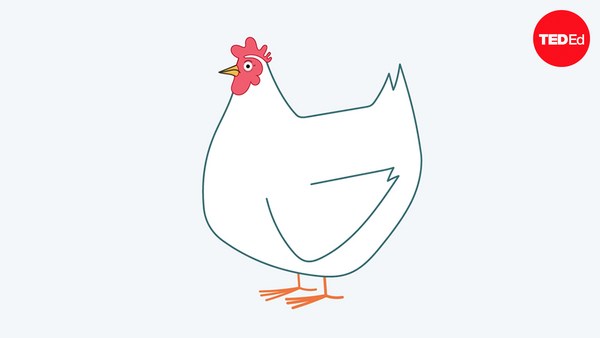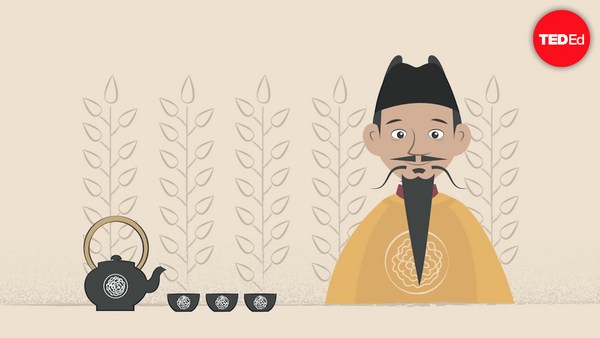Corn currently accounts for more than one tenth of our global crop production. The United States alone has enough cornfields to cover Germany. But while other crops we grow come in a range of varieties, over 99% of cultivated corn is the exact same type: Yellow Dent #2. This means that humans grow more Yellow Dent #2 than any other plant on the planet. So how did this single variety of this single plant become the biggest success story in agricultural history?
Nearly 9,000 years ago, corn, also called maize, was first domesticated from teosinte, a grass native to Mesoamerica. Teosinte’s rock-hard seeds were barely edible, but its fibrous husk could be turned into a versatile material. Over the next 4,700 years, farmers bred the plant into a staple crop, with larger cobs and edible kernels. As maize spread throughout the Americas, it took on an important role, with multiple indigenous societies revering a “Corn Mother” as the goddess who created agriculture.
When Europeans first arrived in America, they shunned the strange plant. Many even believed it was the source of physical and cultural differences between them and the Mesoamericans. However, their attempts to cultivate European crops in American soil quickly failed, and the settlers were forced to expand their diet. Finding the crop to their taste, maize soon crossed the Atlantic, where its ability to grow in diverse climates made it a popular grain in many European countries.
But the newly established United States was still the corn capital of the world. In the early 1800’s, different regions across the country produced strains of varying size and taste. In the 1850’s, however, these unique varieties proved difficult for train operators to package, and for traders to sell. Trade boards in rail hubs like Chicago encouraged corn farmers to breed one standardized crop. This dream would finally be realized at 1893’s World’s Fair, where James Reid’s yellow dent corn won the Blue Ribbon.
Over the next 50 years, yellow dent corn swept the nation. Following the technological developments of World War II, mechanized harvesters became widely available. This meant a batch of corn that previously took a full day to harvest by hand could now be collected in just 5 minutes. Another wartime technology, the chemical explosive ammonium nitrate, also found new life on the farm. With this new synthetic fertilizer, farmers could plant dense fields of corn year after year, without the need to rotate their crops and restore nitrogen to the soil.
While these advances made corn an attractive crop to American farmers, US agricultural policy limited the amount farmers could grow to ensure high sale prices. But in 1972, President Richard Nixon removed these limitations while negotiating massive grain sales to the Soviet Union. With this new trade deal and WWII technology, corn production exploded into a global phenomenon.
These mountains of maize inspired numerous corn concoctions. Cornstarch could be used as a thickening agent for everything from gasoline to glue or processed into a low-cost sweetener known as High-Fructose Corn Syrup. Maize quickly became one of the cheapest animal feeds worldwide. This allowed for inexpensive meat production, which in turn increased the demand for meat and corn feed. Today, humans eat only 40% of all cultivated corn, while the remaining 60% supports consumer good industries worldwide.
Yet the spread of this wonder-crop has come at a price. Global water sources are polluted by excess ammonium nitrate from cornfields. Corn accounts for a large portion of agriculture-related carbon emissions, partly due to the increased meat production it enables. The use of high fructose corn syrup may be a contributor to diabetes and obesity. And the rise of monoculture farming has left our food supply dangerously vulnerable to pests and pathogens— a single virus could infect the world’s supply of this ubiquitous crop. Corn has gone from a bushy grass to an essential element of the world’s industries. But only time will tell if it has led us into a maze of unsustainability.


